
Learn More About
Growth and Development for Children
Call Now or
Fill Out the Form to Schedule Your
Consultation
We accept most insurance!
















Child Growth and Development
The development of a child’s jaw is the essence of beauty and could also determine TMJ health and proper airway development, which can influence how teeth align. Normal growth is what keeps your children’s teeth aligned and in good condition which means they may not need to have orthodontic treatment.
3 Major Influences on Children’s Facial Development:
- Nasal breathing
- Lip seal
- Proper tongue position
When these three factors are not present during the jaw’s growth and development, disharmonies and imbalances of the craniofacial structure can result in conditions such as midface deficiency and long-face syndrome.

The True Causes of Orthodontic Issues That Orthodontists Won’t Tell You
(Malocclusion and Incorrect Facial Development)
- Mouth breathing due to soft tissue dysfunction
(enlarged tonsils, adenoids, allergies) - Incorrect tongue position
- Adverse swallowing patterns
- Poor oral positions
(lips apart, tongue not resting on the palate) - Thumb- and finger-sucking
- Genetics — only 10 percent
Children's Mouth Breathing Has Negative Life-Long Effects
It's very important that your children can breathe through their noses and have an oral posture that keeps their lips together while resting. This also protects the position of their jaws which is very important for healthy facial and airway development.
The position of the tongue is what largely determines normal facial and jaw development. The tongue is a powerful muscle and should rest against the roof (palate) of the mouth to cause the jawline to broaden into a more aesthetically pleasing appearance and allows the proper space for teeth to grow so that they are not crowded and require orthodontics. Because of mouth breathing, your child’s midface does not grow properly and the lower face narrows and elongates. At Advanced Sleep and TMJ Solutions, we screen for this abnormal facial growth in your child.

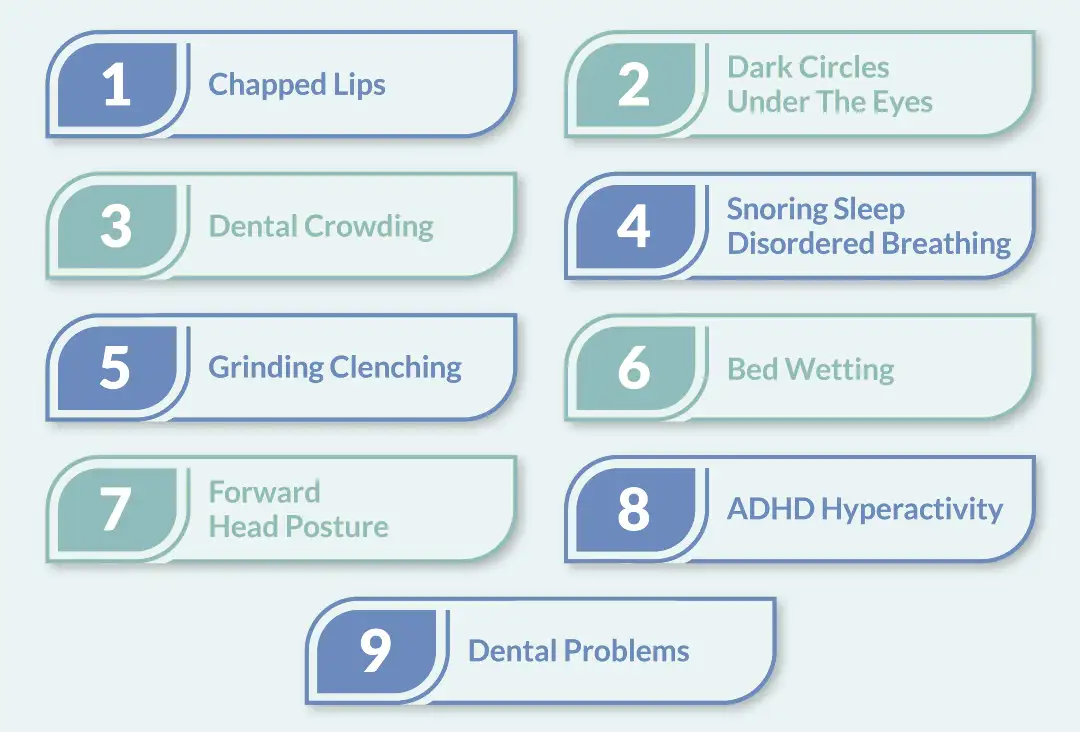
Serious Consequences of Child Mouth Breathing
- Facial feature defects including long-face syndrome and mid-face deficiency
- Chapped lips
- Dark circles under the eyes
- Dental crowding
- Snoring/Sleep Disordered Breathing
- Grinding clenching
- Bed wetting
- Forward head posture
- ADHD hyperactivity
- Dental problems
Mouth Breathing Leads to These Facial and Oral Defects
- High Narrow Palate
- Narrow Maxillary Arch
- Mid-Face Deficiency
- Flattened Face
- Elongated Lower Face
- Crooked Nose
- Set Back Jaw
- Narrow Face
- Recessed Chin/Jaw
- Sunken Cheeks
- Small Jaws Without Room for All the Permanent Teeth

Mouth Breathing Leads to These Facial and Oral Defects
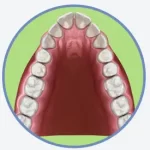
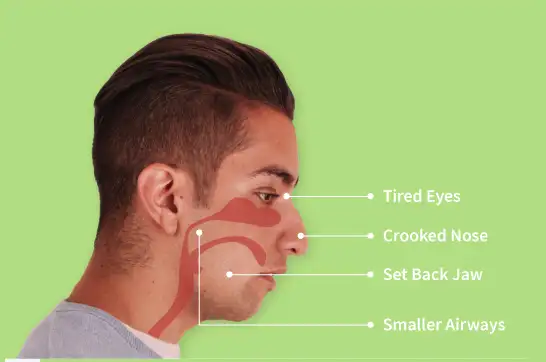
- High Narrow Palate
- Narrow Maxillary Arch
- Mid-Face Deficiency
- Flattened Face
- Elongated Lower Face
- Narrow Face
- Recessed Chin/Jaw
- Sunken Cheeks
- Small Jaws Without Room for All the Permanent Teeth
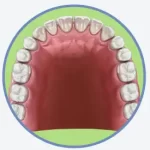
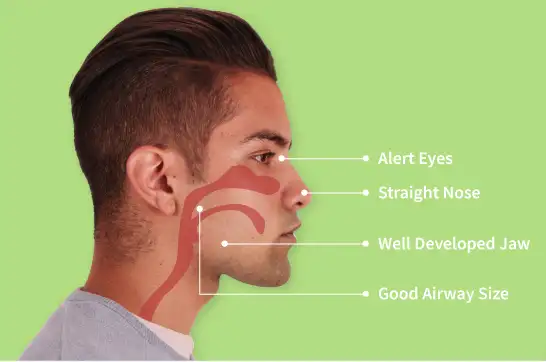
Mouth Breathing Can Lead to a Lifetime of the Following
- Chronic Headaches
- Shoulder & Neck Pain
- Poor posture
- TMJ/TMD Issues
- Dental Crowding & Malocclusion
- Obstructive Sleep Apnea

Issues That Cause Mouth Breathing
- Enlarged Tonsils and Adenoids
- Allergies
- Frequent Viral Infections
- Chronic open-mouth posture
- Myofunctional (tongue) habits
- Ankyloglossia (tongue tie)
- Pacifier Use
- Thumb-Sucking
Signs that Your Child May Be a Mouth-Breather
- Lips not together at rest
- Snoring and restless sleep
- Mouth open when sleeping
- Grinding teeth
- Constant stuffy nose
- Large tonsils
- Allergic “dark circles” under eyes
- Fatigue, attention deficit, learning issues


Your Child’s Tongue Position Is Key to a Lifetime of Health
A tongue placed in the right position can do a lot of shaping of the mouth, jaw, and face. Mouth breathing during the day and while sleeping can cause it to not be in the correct position.
Fact: The tongue has the strongest muscles in the body and can exert up to 500g (17.5oz) of force. It only takes 1,7g (0.05oz) of force to move an individual tooth.
When you aren't eating or talking, your tongue should rest on the roof of your mouth. This is because the tongue position determines the shape and size of the upper jaw. If your child habitually mouth breathes or has a tongue tie, the upper teeth will not have enough space and the chin will be forced back and down.
A normal top jaw grows properly because the tongue rests in the correct position (known as the Correct Tongue Resting Position), which is in the roof of your mouth. If your tongue does not rest on the roof of your mouth, your upper jaw may become too narrow. This means that there won't be enough room for teeth to grow and be straight.
Symptoms of Children with Sleep Disordered Breathing (SDB) Can Include
- Snoring, gasping, open-mouth posture at night
- Morning tiredness and daytime fatigue
- Developmental and behavioral problems
- Interrupted sleep
- Hyperactivity
- Withdrawal
- Executive dysfunction
- Depression
- Learning difficulties
- Social issues
- Bedwetting

Contact Advanced Sleep and TMJ Solutions Today
If you have any questions about growth and development for children, schedule an appointment by completing the form, or Call Us at (262) 400-3185 today.